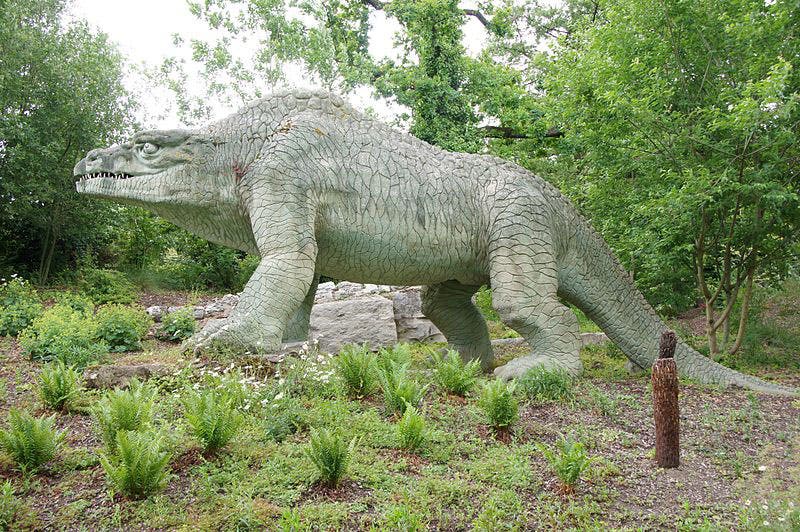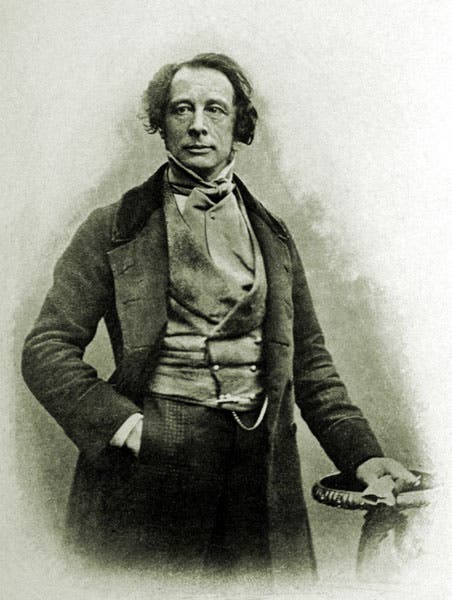Scientist of the Day - Charles Dickens
Charles Dickens, the Victorian novelist, was born Feb. 7, 1812. In March of 1852, Dickens published the first installment of his 20-part serial novel, Bleak House (first image). This first issue is of some interest to us for its opening sentences:
"London. Michaelmas term lately over, and the Lord Chancellor sitting in Lincoln's Inn Hall. Implacable November weather. As much mud in the streets as if the waters had but newly retired from the face of the earth, and it would not be wonderful to meet a Megalosaurus, forty feet long or so, waddling like an elephantine lizard up Holborn-Hill."
This would seem to be the first appearance of a dinosaur in a work of fiction. Megalosaurus had been discovered around 1815 and announced in 1824, but the finder, William Buckland, had only a piece of the lower jaw and a few leg bones, and he was just speculating when he surmised that the fossils came from a forty-foot long Mesozoic lizard. We displayed the paper in which Buckland announced Megalosaurus in our exhibition, Paper Dinosaurs.
It was not until 1854 that Richard Owen, the noted comparative anatomist, published a reconstruction of Megalosaurus, two years after Dickens had him waddling up Holborn Hill (third image). But it happens that Dickens and Owen were good friends – had been since 1843 – and it is very likely that Owen shared his sketch with Dickens before it was published. Indeed, the expression "elephantine lizard" is one that Owen coined and Dickens borrowed. We displayed Owen's 1854 paper in Paper Dinosaurs as well.
In the same year that Owen published his sketch, a full-sized concrete reconstruction of a Megalosaurus was unveiled on Sydenham Hill in south London (fourth image; Megalosaurus is at the left). It had been constructed by Benjamin Waterhouse Hawkins, in consultation with Owen, and it joined three other dinosaurs and a dozen other prehistoric reptiles on the grounds of the re-erected Crystal Palace. Now fans of Dickens could see a Megalosaurus in the flesh, so to speak, and more easily imagine it waddling up a hill in Holborn.
Megalosaurus is still there (fifth image), ready to come to the visual aid of modern readers of Bleak House.
The photograph of Dickens, by Antoine Claudet (sixth image), was taken in 1852, the same year that Bleak House was published.
Dr. William B. Ashworth, Jr., Consultant for the History of Science, Linda Hall Library and Associate Professor, Department of History, University of Missouri-Kansas City. Comments or corrections are welcome; please direct to ashworthw@umkc.edu.











